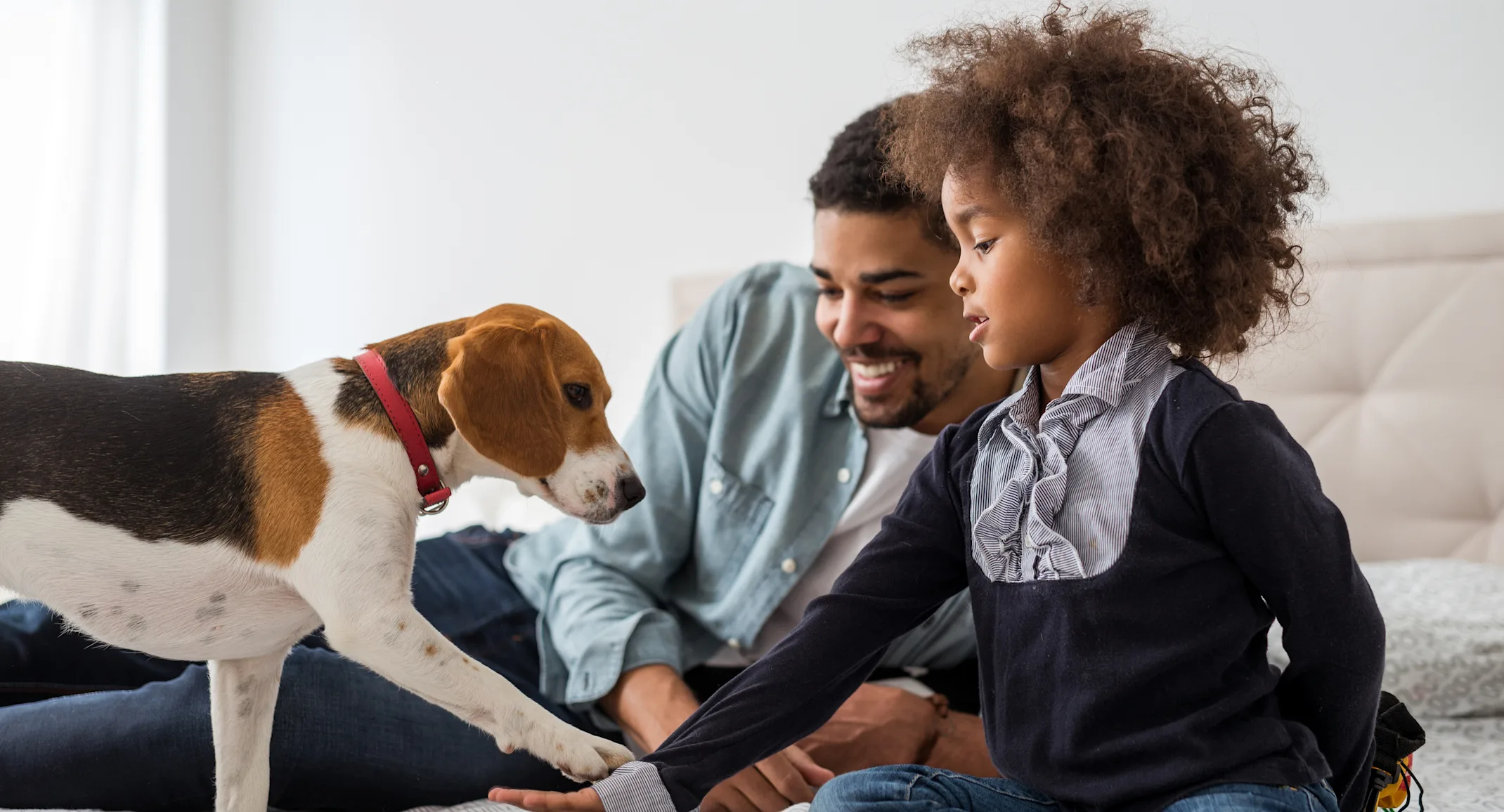A Safety Guide for Kids and Dogs
Pet Lifestyle

Teach your child to ask permission before petting an unfamiliar dog
Asking the owner’s permission to pet an unfamiliar dog is one of the most important rules you can teach your child to keep them safe. Reaching to touch an adorable dog is extremely tempting, but this can be a recipe for disaster if your child frightens or startles them. A dog’s owner knows their pet’s personality, and to avoid a tragedy, children must learn to ask permission before petting an unfamiliar dog—no matter how cute and cuddly.
Help your child to understand a pet’s body language
Dogs tell us a lot through their body language, and to avoid injury, kids need to understand the message being conveyed, such as nervousness or discomfort. For example, if your child approaches a dog—unfamiliar or not—and they move away, pin back their ears, duck their head, or tense up, they are communicating they do not want to be approached. When explaining dogs’ body language to your child, use terms they understand, and provide examples, emphasizing why they should respect the message the dog is communicating. Remind your child that just as they have times they would rather be alone, so do pets, and giving them space is the kind and safe response.
Describe the wrong way to pet a dog
Sudden movements and noises, and some displays of physical affection people show can startle a dog or make them feel vulnerable, which can lead them to respond aggressively. Before modeling the appropriate way your child should approach a dog, teach them the behavior they should absolutely avoid around all dogs, including:
Sneaking up from behind or moving suddenly — Sudden sounds and movement can easily startle dogs. Ensure your child always approaches a dog calmly and gently.
Getting in their face — Your child should avoid putting their face close to a dog’s face and making direct eye contact, as this behavior may threaten some dogs.
Petting their head — When first petting a dog, avoid reaching straight at them and over their head.
Pulling their ears or tails — Ensure your child—especially a young one—does not pet a dog’s ears and tail, as they are tempted to tug.
Giving them hugs — While we view hugging as a display of love and affection, dogs feel trapped and vulnerable when we wrap our arms around their neck. Dogs always prefer gentle petting to hugging.
Show your child how to approach a dog respectfully
Once your child understands the importance of receiving an owner’s permission before petting an unfamiliar dog, identifying their body language signs, and reacting appropriately to their message, teach your child how to approach a dog respectfully. Approach all animals slowly and gently, and give them the opportunity to decline the invitation to be touched. Invite the dog over by patting your leg, giving them the opportunity to opt out of the interaction. If the dog declines to come, explain to your child that this is their way of saying, “No thank you.” If the dog is interested, and comes to your child to receive a pet, teach them to follow these safety steps:
Open up their hand for the dog to sniff.
Gently caress the pet’s side, avoiding potentially sensitive areas such as their ears, tail, or feet.
Pause and wait for the dog’s response to determine if they are still comfortable being touched.
Supervise kids and pets
Always supervise interactions between pets and young children. Your child’s necessary level of support and feedback depends on their age and experience with animals. By observing your child interacting with a dog, you can intervene and modify their actions if you see concerning behavior, preventing the escalation of a potentially dangerous situation. Remember, the best-trained dog may react aggressively if a well-intentioned, rambunctious child oversteps the animal’s boundaries.
Socialize your dog from a young age
Properly preparing your pet for interactions with children—especially unfamiliar children— is as important as teaching children appropriate behavior around animals. From a young age, expose your dog to a variety of new people and places. Positively reinforce your dog’s good behavior around kids by giving them plenty of high-value treats and praise after a friendly interaction.
Kids and dogs are amazing together, and by teaching both how to interact safely, you can ensure they enjoy years of friendship and adventures. For additional pet health resources, or to find a veterinary practice or pet resort in your area, use this helpful locator.
